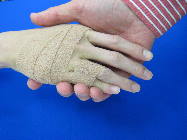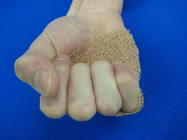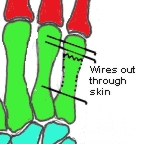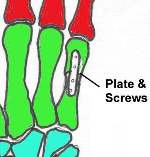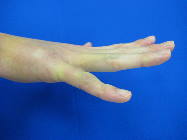Boxer's Fractures
General
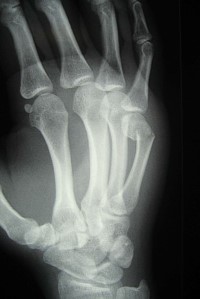
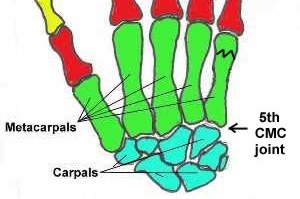
There are 27 bones in the hand & wrist. A fracture occurs when excess force is applied to a bone.
A Boxer’s Fracture is a fracture of the Neck of the 5th Metacarpal. It is usually caused by a punching injury.
When the forces are severe the bone may end up in multiple pieces or become significantly
displaced resulting in a deformity. An open (or compound) fracture is when a bone fragment
shows through the skin & is at risk of infection. This may occur if the punch hits a tooth.
- Many people think that a “fracture” is different from a “break”, but they are the same.
Effect on the hand
When a bone breaks there is bleeding from the bone ends which can result in finger
stiffness. If a fracture involves the joint surface then arthritis may develop later in life.
A Boxer’s Fracture results in loss of prominence of the little finger knuckle. It may result in
malrotation of the little finger such that it overlaps the ring finger when one makes a fist.
This has a significant affect on grip strength.
This fracture usually does not involve the joint surface and so arthritis in later life is unusual.
Malrotation Normal
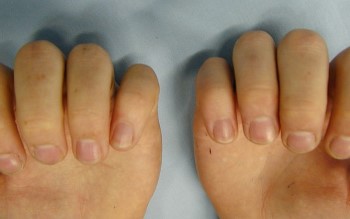
In general the function of the ring and little fingers is to perform strong grip where as the
index and middle fingers are for fine grasp and manipulation.
Full bend of the little finger is therefore very important.
Fracture Types
Stable Unstable
Undisplaced Displaced (rotated)
Joint not involved Joint involved
Closed Open
1 fragment Many fragments
Acceptable Unacceptable
Fixable Not Fixable
Treatment
1. Control & reduce swelling: - ice packs
- elevation
2. Control pain: - splint - pain killers
3. Coban bandage:
- lets other people know that you have a fractured hand.
- Discourages people from shaking your hand especially after 2-3 weeks when the pain has
improved but the fracture has not united.
- It is wrapped around the hand and between the ring and little fingers to prevent the little
finger catching on things
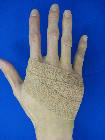
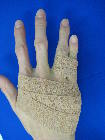
4. Prevent stiffness: - early movement if the fracture is stable, even before the fracture
has healed (many Boxer’s fractures are stable)
5. Prevent deformity
- “Reduction” means pulling the bones back into place. This can be done “Closed“ in which no
cut is made & a plaster or splint is applied or “Open” where a cut is performed & the bones are
directly repositioned. An open reduction often requires the use of wires or plates & screws.
- A closed reduction alone is rarely performed for a Boxer’s fracture because it is unstable once
the bone has been realigned (due to crushing of bone at the fracture site). It may be combined
with the insertion of wires through the skin.
An open reduction with a plate allows immediate movement of the finger after the surgery which
is desirable to prevent stiffness.
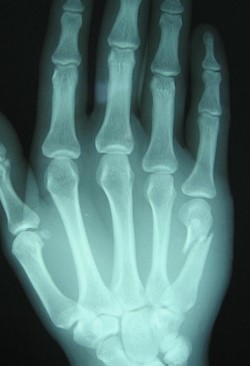
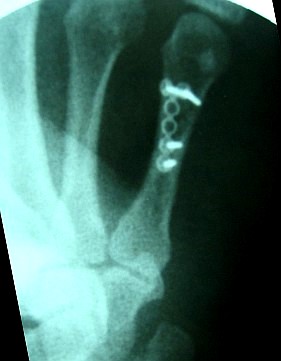
The major indication to operate on a Boxer’s fracture is if the little finger is significantly rotated
and is affecting the function of the ring finger.
Results

- Loss of 5th Knuckle - Perfect alignment of the bone on X-ray is not always necessary to get an
excellent result. A large degree of forward angulation at the fracture site can be tolerated without
affecting hand function. This is because there is a large amount of compensatory movement
(25 - 40°) at the 5th C.M.C. joint to make up for deformity at the fracture site.

- A bony lump may appear at the fracture site as the bone heals & is known as “fracture callus”.
This is a normal part of the healing process & usually gets smaller over 6 - 12 months.
- Little finger droop – it often takes 6-8 weeks for the little finger to fully straighten
- Ache – the hand often aches for 8 - 12 weeks after the fracture even though it has healed.
It will generally take 6 weeks for a hand fracture to heal and a further 6 weeks to reach near
normal strength. Very heavy lifting and contact sport should be avoided until the fracture has
solidly healed (8 - 12 weeks). Occasionally loss of bone alignment occurs & additional treatment
may be required.
________________________________________________________________________________________________
LAST UPDATED ON SATURDAY, 27 FEBRUARY 2015

